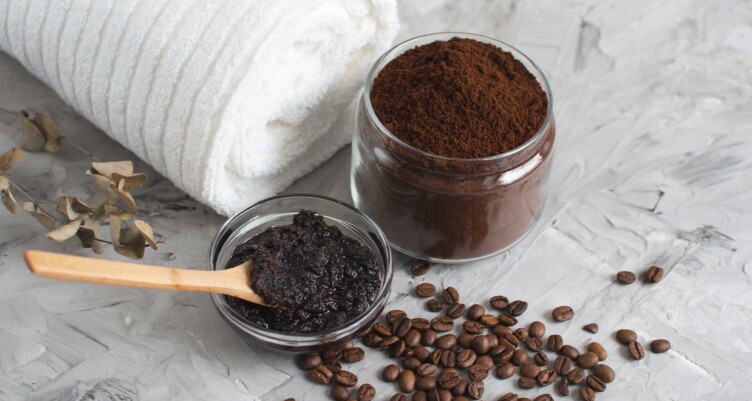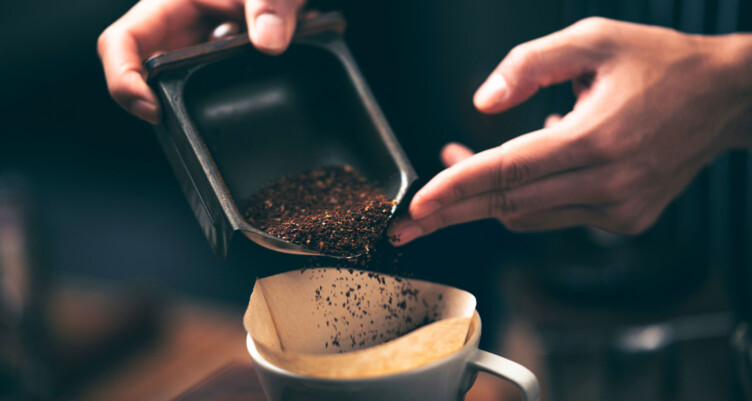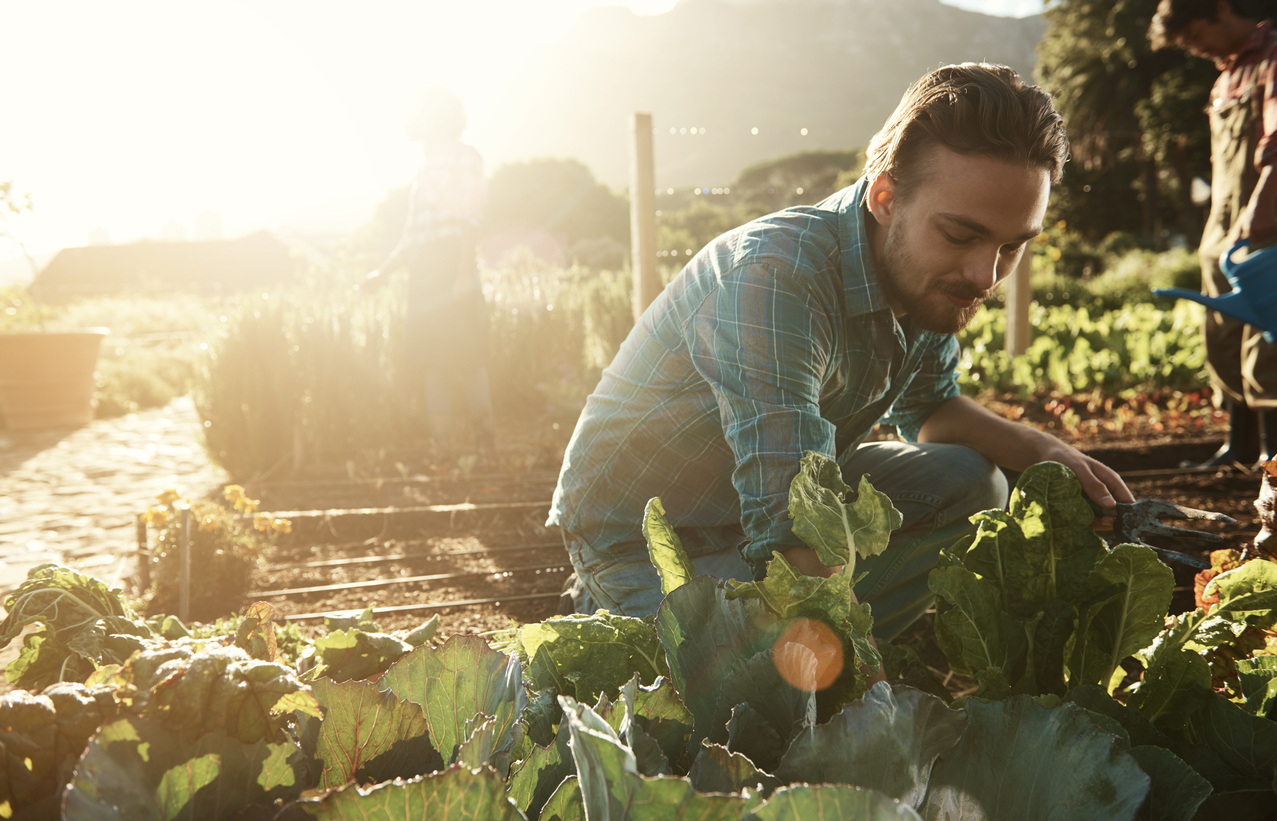10 Creative Ways to Repurpose Used Coffee Grounds for a Greener Lifestyle

- Uses for used coffee grounds offer countless possibilities to help reduce waste and promote a sustainable coffee habit.
- Coffee grounds in the garden can improve soil quality, as they add nutrients and enhance moisture retention. This makes them great for composting or enriching garden beds.
- Making natural products with used coffee grounds, like cleaners or deodorizers, can help you avoid harsh chemicals in store-bought options.
Coffee grounds are more than just a byproduct of your morning brew–they’re a versatile resource with many surprising uses. Instead of tossing them in the trash, consider repurposing them around your house and garden. The grounds’ coarseness, residual caffeine, pigment and nutrients still offer lots of potential uses.
Grab yourself a coffee and explore the following creative and eco-friendly ideas to make the most of your coffee grounds.

How to Reuse Coffee Grounds
Ready to make your sustainable coffee habit even more eco-friendly? Beyond choosing ethically sourced beans, reusing coffee grounds reduces waste and supports green living.
1. Coffee Body Scrub
Making your coffee scrub at home is a great way to save money, avoid harsh chemicals and reuse coffee grounds for your skincare routine.
The natural texture of coffee grounds creates a gentle physical exfoliator that helps remove dead skin cells and refreshes your skin. Coffee grounds contain caffeic acid, which is a strong antioxidant.[1] According to a scientific study, caffeic acid may boost collagen production, help prevent early signs of aging, plus contribute to healthy skin through its antimicrobial properties.[2]
- Mix 1 cup of used coffee grounds from freshly brewed coffee with 6 tablespoons of coconut oil or jojoba oil in a jar to make a simple coffee scrub.
- Add three tablespoons of sea salt or white sugar and stir well until everything is combined. Store your scrub in a sealed jar and use it in the shower by gently rubbing it on your skin, then rinse off for smooth, refreshed skin.
Note: Make sure to place a fine mesh sieve over the drain to catch the grounds, preventing them from going down the drain and causing a potential clog. Throw them in the trash or, even better, compost.
2. Natural Scrub for Cookware
Coffee grounds are great for exfoliating skin and making a natural scrub for cleaning pots and pans. Their coarse texture also works well to scrub away stuck-on food, grease and grime.
Sprinkle dry coffee grounds onto the dirty pot or pan and scrub with a sponge or cloth. Avoid scrubbing with enough force to damage your cookware. After scrubbing, rinse the cookware well to wash away any remaining grounds.
Reusing coffee grounds to clean pots and pans is a great alternative to store-bought cleaners. Traditional cleaning products often have risky ingredients that pose health risks.[3] Using eco-friendly coffee grounds reduces your exposure to chemicals and repurposes waste, making it a no-brainer for a more sustainable lifestyle.

3. Coffee Ground Bath
Ready for some me-time? A coffee ground bath is a great way to relax after a busy day or challenging workout. The rich aroma of coffee creates a soothing smell to calm your mind and helps eliminate unpleasant smells from the skin. Coffee grounds are excellent at absorbing and neutralizing odors,[4] making them a natural deodorizer that leaves your skin smelling fresh.
Simply place one cup of used coffee grounds in a muslin bag or an old stocking and add it to your warm bath. As you soak, gently rub the bag over your skin for an extra exfoliating effect.
4. Caffeine Eye Mask
You can use coffee grounds as a natural eye mask to help reduce puffiness and dark circles, like the caffeine in cosmetic products.[5] The skin around the eyes has fewer oil glands and collagen, making it more prone to fine lines, dehydration and dullness. Studies have shown that caffeine can improve the appearance of the skin around the eyes by reducing the depth of wrinkles and dark circles and enhancing skin elasticity.[6]
To make an eye mask at home, mix used coffee grounds with coconut oil or water to form a paste and gently apply it under your eyes. Leave it on for about 10 minutes before rinsing off. This natural treatment can help refresh and brighten your eyes without the need for expensive products.
5. Make a Hair Rinse
A coffee rinse helps remove product buildup because coffee is slightly acidic,[7] which can break down residue from hair products like shampoos, conditioners and styling products. The acidity of coffee helps balance the pH of the scalp and hair, gently dissolving and washing away oils, dirt and buildup that can weigh your hair down and make it look uninteresting. Plus, the caffeine in coffee stimulates the scalp, which can help clear out impurities and leave hair feeling cleaner and more refreshed.
Start by taking about 2 tablespoons of used coffee grounds and steep them in 2 cups of hot water for 10 minutes. Let the mixture cool completely, then strain the grounds to get a liquid coffee rinse. After shampooing, pour the coffee rinse over your hair and scalp, covering all areas. Massage it into your scalp to boost circulation, and let it sit for about 10 minutes to absorb the benefits. Finally, rinse your hair thoroughly with lukewarm water.
6. Tint Clothes and Fabric
Want to add a sepia tone to a light or neutral top? Coffee stains cotton, as you may have discovered while wearing a crisp white shirt on your way to work. Dyeing any light fabric with coffee adds a beautiful, antiqued look to any fabric (when it’s intentional).
To do this:
- Soak your cotton item in water in a pot.
- Add enough left over coffee grounds to make the water opaque.
- Bring to a boil, turn off the heat and let sit for at least 30 minutes.
- Wash in the washing machine before wearing.
7. Furniture Scratch Cover-Up
Did you know you can repurpose used coffee grounds to hide small scratches on wooden furniture? The coffee grounds’ natural dark color can blend well with darker wood finishes, making scratches less noticeable.
Here’s how:
- Take a small amount of damp, used coffee grounds and gently rub them over the scratch with a soft cloth or cotton swab.
- Let the grounds sit for 5 to 10 minutes, allowing the natural oils and color to soak into the wood.
- Wipe away the excess with a clean cloth.
This method works best on dark wood furniture, as the grounds can fill in the scratch and help match the surrounding wood color. Keep applying coffee grounds and wiping them off until the wood turns rich, wood brown you want.
First, try a patch test on a less visible area to see if you can achieve the color tone you want.

8. Toss Them on Plant Roots
Recycling used coffee grounds for plants can enrich the soil and support healthy root growth. Plants like pothos, spider plants and peace lilies enjoy the slightly acidic boost and added nutrients that coffee grounds provide, such as nitrogen, potassium and phosphorus. When mixed into the soil or added to compost, coffee grounds help retain moisture and improve drainage, promoting stronger roots.
However, some plants are sensitive to coffee grounds’ acidity, so do your homework first. Succulents, cacti and snake plants prefer more neutral or alkaline soils and may not thrive with added coffee grounds. To use coffee grounds safely, sprinkle a thin layer around the base of your acid-loving plants and avoid using too much to prevent over-acidifying the soil.
9. Compost Your Grounds
Coffee grounds are an excellent addition to your compost because they provide a rich source of nitrogen, a key nutrient that helps break down organic matter and supports the growth of beneficial microorganisms. These microorganisms speed up composting, turning waste into nutrient-rich soil more quickly.
Coffee grounds also add texture to compost, improving aeration and moisture retention, which is essential for healthy decomposition. Adding coffee grounds to your compost pile creates a balanced mix of “greens” (nitrogen-rich materials) and “browns” (carbon-rich materials), enhancing the overall quality of the compost and making it more beneficial for your garden.
10. Natural Deodorizer
Do you know how some stores have coffee beans to help reset your sense of smell when testing fragrances? That’s because coffee can cleanse your palate for your nose, though there’s little (if any) hard scientific evidence to prove it.[8]
Still, coffee absorbs smells,[9] so it could help eliminate unwanted odors. To give it a try, start by dehydrating used coffee grounds by spreading them on a baking sheet and letting them dry out completely. Once dry, place them in an open jar and place them in areas where you want to freshen the air. You can also use coffee grounds in small sachets or bags to put in shoes, gym bags, or your car for a natural, chemical-free deodorizer.
Can You Reuse Coffee Grounds to Brew Coffee?

While you can reuse coffee grounds to brew another cup of coffee, the quality and flavor will be significantly lower. The first brew extracts most of the flavors, oils and caffeine from the coffee grounds, leaving them nearly depleted. Reusing them will result in a weak, watery cup of coffee that lacks the richness and aroma of a fresh brew. And as if that’s not bad enough, the used grounds may develop a bitter or sour taste due to over-extraction and exposure to air.
Instead, improve your morning coffee routine by reusing the grounds around your home and garden. Stick to our list above and treat yourself to the best cup of coffee you can brew.
Sign up for early access to sales, product launches, the latest Bulletproof news and more!



